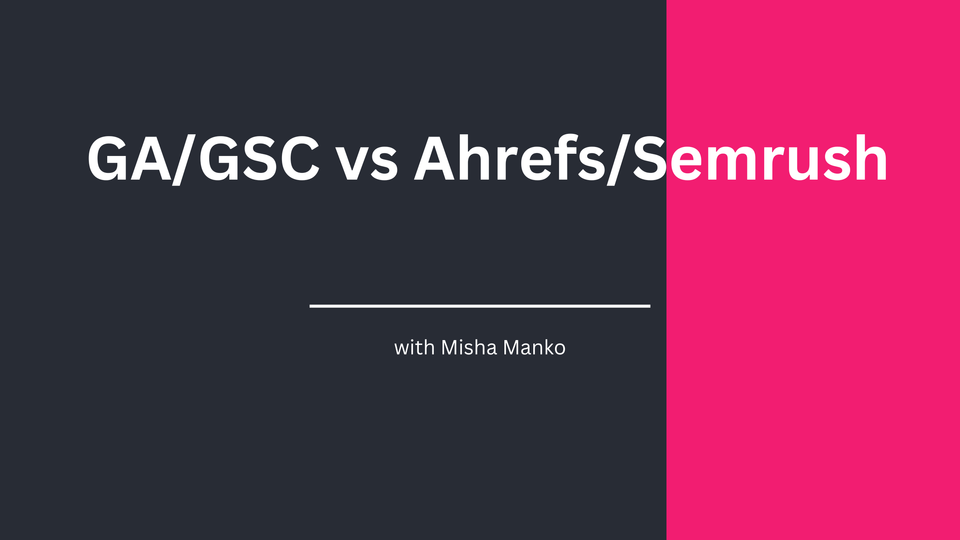Why Is There a Huge Difference Between Google Analytics and Ahrefs/SEMrush Traffic?

If you’ve ever compared traffic data between Google Analytics (GA) and tools like Ahrefs or SEMrush, you’ve likely noticed significant discrepancies. The explanation lies in how these platforms obtain and interpret data. Here’s a breakdown of why these differences exist and why relying on tools like Ahrefs/SEMrush for precise traffic insights is problematic.
Encrypted Keywords:
In 2013, Google introduced encryption for search queries, meaning that keyword data is no longer openly shared. This change fundamentally altered how search data is accessed. Platforms like SEMrush and Ahrefs don’t have actual keyword data from Google - because it’s not available to anyone. They rely on estimations, extrapolated from secondary sources like Google Ads or third-party data, which are inherently limited and inaccurate.
For example, consider this: A website rank on the first page for “what is Google LLC,” a term with 3,000 monthly clicks according to Google Analytics. SEMrush, however, reports that this keyword has zero traffic. Why? Because SEMrush’s data is not rooted in real search data but in guesses drawn from incomplete and redacted information.
Where Ahrefs/SEMrush Gets Its Data
Ahrefs/SEMrush primarily derives its search volume data from Google Ads. But even here, the information is “bucketed” and aggregated, often lumping similar keywords together and redacting less common phrases. It then guesses the most persistent or frequently searched versions of a term.
Take a closer look at Google Search Console (GSC), and you’ll notice a reduction in the reporting of typos or uncommon word combinations. This isn’t just Google autocorrecting - it’s part of their effort to streamline data into phrases that are easier to monetize. These “sellable phrases” are what tools like SEMrush tend to focus on, further distorting the reality of actual search behavior.
Consent Mode v2 and GA4 Limitations
Another layer of complexity comes from Google Analytics 4 (GA4) and Consent Mode v2. GA4 often records only about 50% of traffic when Consent Mode is enabled, as it respects user preferences and limits data collection. This introduces further discrepancies when comparing GA4’s data to SEMrush or Ahrefs, which don’t face the same restrictions but also don’t have real access to your traffic data.
The Illusion of Arhefs/SEMrush Accuracy
Believing that SEMrush or Ahrefs provides accurate search data is wishful thinking. These platforms cannot access real search volumes or user behavior. Instead, they use algorithms to estimate traffic, search volume, CPC, and competition based on incomplete data. Every number they provide is, at best, an educated guess - and at worst, entirely misleading.
They have successfully marketed their tools as authoritative sources, but the truth is stark: they are guessing. Search data hasn’t been universally available since 2013. The only sources of actual search data is Google Search Console, and even that data is only accessible to website owners.
Member discussion